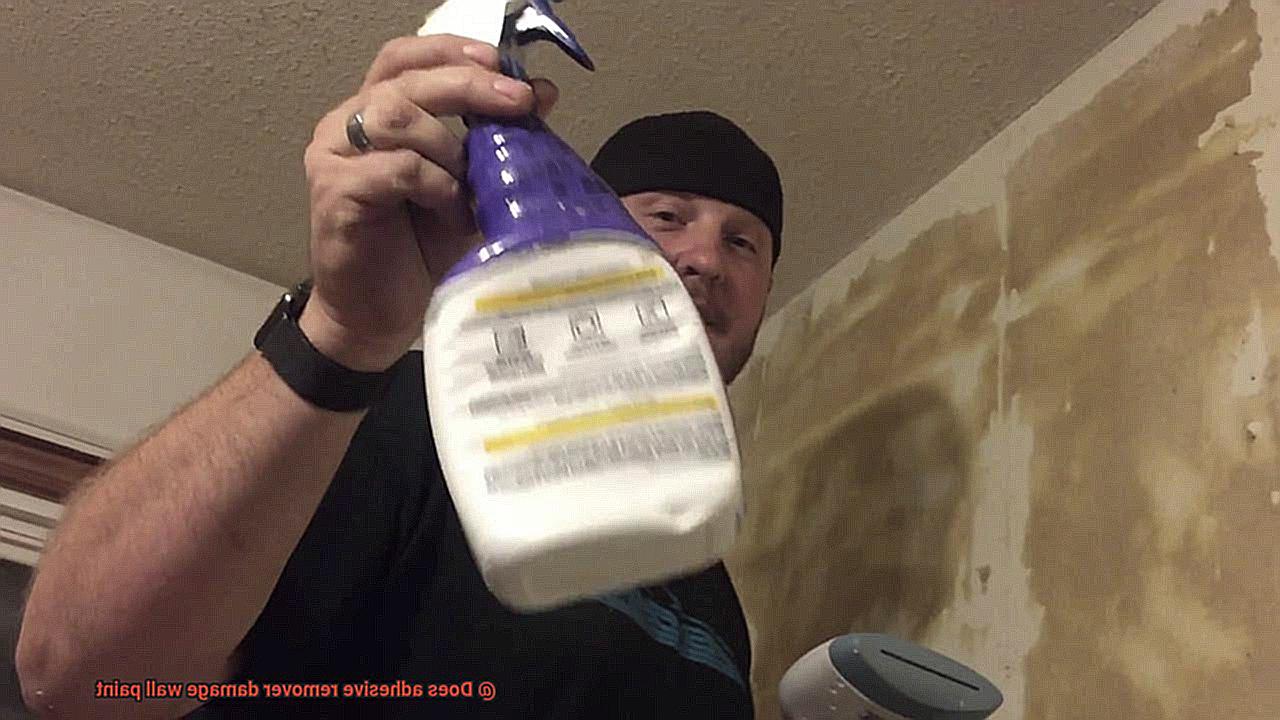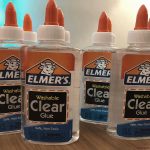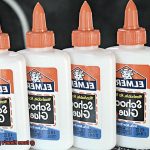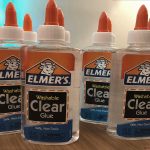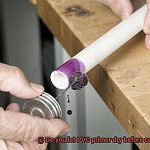Got stubborn stickers and tape residue on your walls?
Adhesive removers might be the answer, but you’re worried they’ll wreck your precious paint job. Don’t sweat it, you’re not alone.
Plenty of homeowners have the same concerns. That’s why we’re here to dive deep into this topic and uncover the truth about adhesive removers and their effect on wall paint.
So let’s kick those worries to the curb and find out if adhesive removers are friend or foe to your wall paint.
Types of Adhesive Removers
Contents
- 1 Types of Adhesive Removers
- 2 Potential Damage to Wall Paint
- 3 Choosing the Right Adhesive Remover
- 4 Water-Based vs Solvent-Based Removers
- 5 Testing an Adhesive Remover Before Use
- 6 Following Manufacturer Instructions
- 7 Applying the Adhesive Remover Gently
- 8 Possible Paint Damage Despite Precautions
- 9 Conclusion
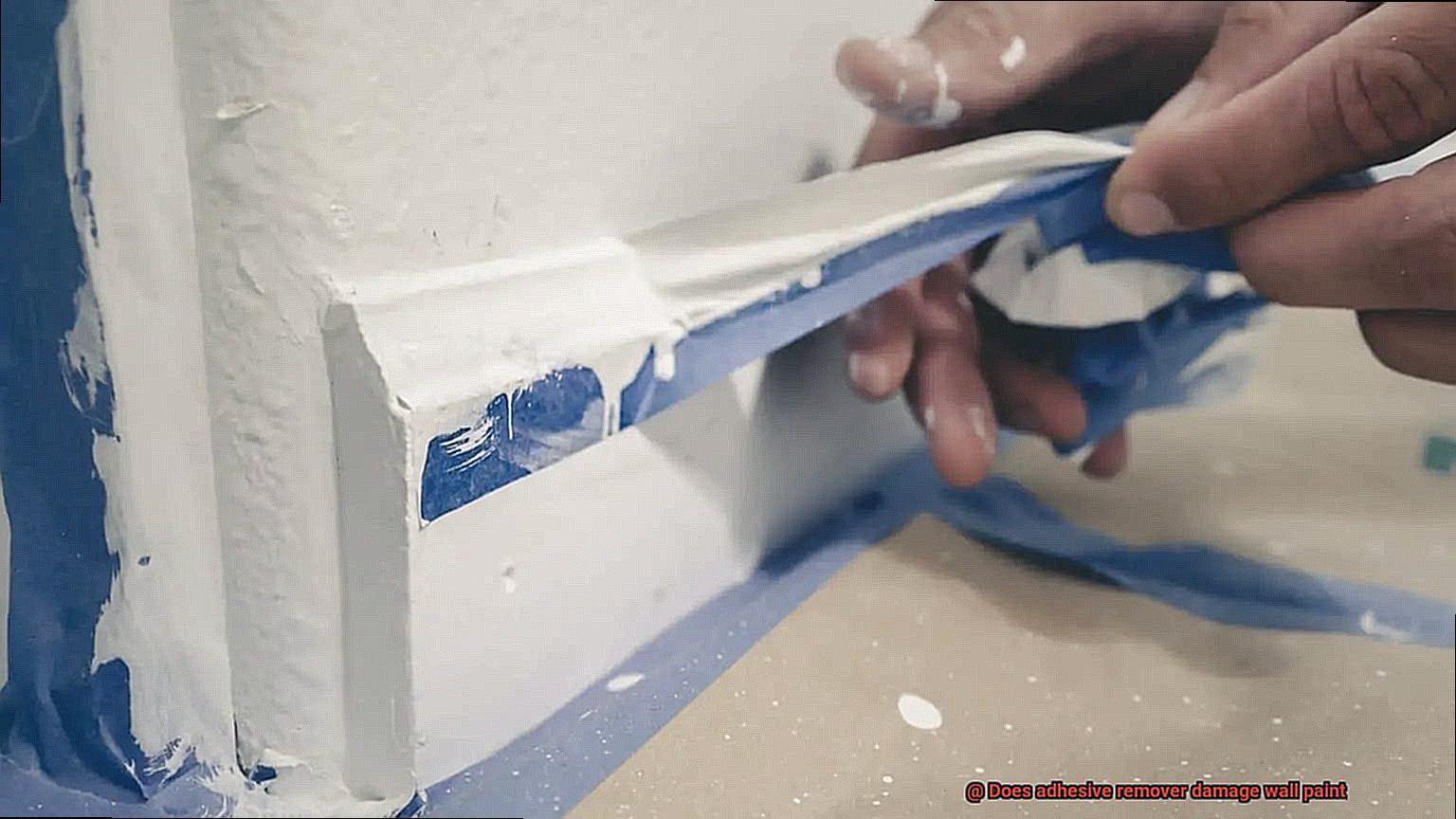
Removing adhesive residue from walls can be a challenging task, but with the right adhesive remover, it becomes a breeze. However, it’s important to choose the appropriate type of adhesive remover to avoid any unintended damage to your wall paint. In this guide, we will explore the various types of adhesive removers and their potential impact on wall paint.

Solvent-based adhesive removers: The Powerhouses
Solvent-based adhesive removers are the superheroes of glue removal. These potent products contain chemicals like acetone, mineral spirits, or methyl ethyl ketone (MEK) that can dissolve even the toughest adhesives.
However, their strength can also pose a risk to wall paint. The strong chemicals have the potential to strip off or discolor the paint. It is crucial to test these removers on a hidden spot before using them on the entire wall to ensure they won’t cause any damage.
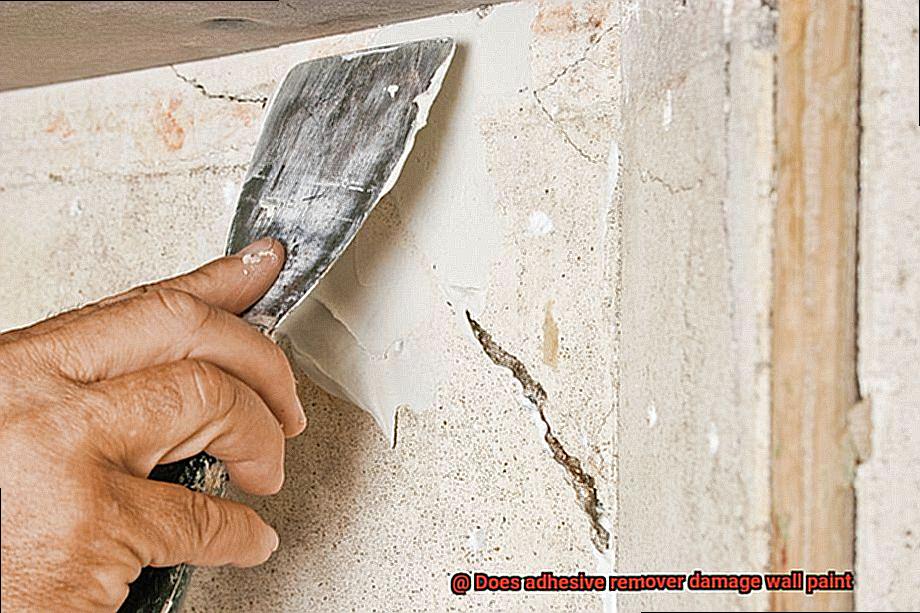
Citrus-based adhesive removers: The Gentle Guardians
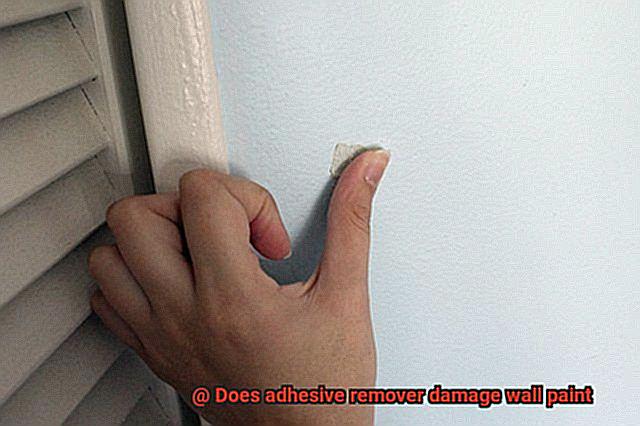
If you prefer a safer option for your painted walls, citrus-based adhesive removers are your go-to choice. Made from natural extracts derived from citrus fruits like oranges or lemons, these gentle guardians effectively break down adhesives without significantly damaging the paint.
They also leave behind a delightful citrus scent, making your glue removal experience more pleasant. While they are generally safe for painted walls, it’s still advisable to conduct a small test in an inconspicuous area.
Soy-based adhesive removers: The Eco-Friendly Warriors
For those who prioritize environmental sustainability, soy-based adhesive removers are the perfect solution. These eco-friendly warriors are derived from soybean oil and are generally considered safe for use on painted walls. They offer effective adhesive removal while minimizing the risk of damage.
As with other types of removers, it’s always prudent to conduct a test before widespread application. By choosing soy-based alternatives, you can remove adhesives while being kind to the environment.
Gel or paste adhesive removers: The Sticky Saviors

Gel or paste adhesive removers are the sticky saviors that cling to vertical surfaces without dripping or running. These products are formulated to be safe for various surfaces, including painted walls. They provide convenience and effective adhesive removal. It’s important to carefully read the instructions and conduct a test before applying them widely. With these sticky saviors, you can ensure a hassle-free removal process without worrying about damage to your wall paint.
Conclusion:
Adhesive removers are essential tools for rescuing your walls from sticky residue nightmares. By selecting the right type of adhesive remover and following proper application techniques, you can safely remove adhesives without damaging your wall paint.
Whether you opt for the powerful solvent-based removers, gentle citrus-based alternatives, eco-friendly soy-based options, or sticky gel or paste formulas, always conduct a test beforehand and proceed with caution.
Potential Damage to Wall Paint
When it comes to removing stubborn adhesive residue from your walls, adhesive removers can be a lifesaver. However, using these removers incorrectly can potentially damage your wall paint. To avoid any paint disasters, it’s crucial to choose the right adhesive remover for the job.
Some removers are specifically designed to be safe for use on painted surfaces, while others may contain harsh chemicals that can strip or discolor the paint. Always check the label or instructions of the remover to ensure its suitability for painted walls.
Before diving in headfirst, it’s wise to test the adhesive remover on a small, inconspicuous area of the wall. This helps determine if any damage or discoloration occurs before applying it to a larger area. Better safe than sorry, right?
Signs of damage to your wall paint caused by adhesive removers include peeling, blistering, or discoloration. In some cases, the damage may be irreversible and require repainting of the affected area. That’s why it’s crucial to follow instructions carefully and use protective measures such as wearing gloves and ensuring proper ventilation in the area.
But wait, there’s more. The condition of your wall paint can also impact its susceptibility to damage from adhesive removers. If your paint is old, flaky, or already in poor condition, it may be more prone to being damaged by the chemicals in the remover. So keep that in mind before starting your sticky situation.
If you’re looking for alternative methods that are less likely to cause damage to your wall paint, consider using heat guns, steamers, or scraping tools instead of chemical-based removers. These methods may require more time and effort, but they could save you from a paint disaster.
When in doubt, it’s always a good idea to consult with a professional or seek expert advice. Especially if you’re dealing with delicate or valuable surfaces, you don’t want to take any chances.
Choosing the Right Adhesive Remover
Choosing the right adhesive remover is crucial for preserving the integrity and beauty of your walls. With a wide range of options available, it can be overwhelming to know which one to choose. However, by considering a few key factors, you can make an informed decision.
First and foremost, it is important to consider the type of adhesive you are dealing with. Is it a stubborn residue from a sticker or tape? Or is it a more heavy-duty adhesive from wallpaper or tiles? Different adhesives require different removers, so be sure to check the product label for compatibility.
Another important factor to consider is the surface you are working on. If the surface is painted, using a gentle adhesive remover is essential to avoid any damage. Citrus-based and water-based removers are excellent options for painted surfaces as they are less likely to cause discoloration or stripping.
If you are dealing with a particularly stubborn adhesive, a solvent-based remover may be necessary. However, it is important to exercise caution as these removers can be harsh and may damage certain types of wall paint. Always test a small, inconspicuous area before using the remover on a larger surface.
In order to ensure the best results and avoid any unwanted surprises, carefully read the product labels and follow the instructions provided by the manufacturer. These guidelines are specifically designed to maximize effectiveness while minimizing any potential risks.
If you still find yourself unsure about which adhesive remover to use, do not hesitate to seek professional advice. Consult with a professional or reach out to the manufacturer or supplier of the adhesive remover. They will be able to provide expert advice based on your specific situation.
Water-Based vs Solvent-Based Removers
In the battle against stubborn adhesive residue, adhesive removers are the unsung heroes that save painted surfaces from potential damage. But when it comes to choosing the right remover, should you opt for water-based or solvent-based? In this blog post, we will compare and contrast these two types of removers, providing you with the knowledge needed to make an informed decision.

Water-Based Removers: Gentle but Effective
- Safe and Versatile: Like friendly neighborhood superheroes, water-based removers are formulated with mild solvents or surfactants, making them safe to use on various surfaces, including painted walls. They possess the power to defeat a wide range of adhesives without causing harm.
- Minimal Damage: These gentle giants are less likely to cause discoloration or staining compared to solvent-based removers. They are designed to dissolve adhesive residues without leaving a trace behind, ensuring the beauty of your painted surfaces remains intact.
- User-Friendly: With an odorless or mild scent, water-based removers create a pleasant experience when removing stubborn adhesives like stickers, tape residue, or gum. Indoor use becomes a breeze with these superheroes.
- Easy Application: Simply apply the remover directly to the affected area and wait a few minutes for it to work its magic. Then wipe away the residue with a cloth or sponge. It’s as simple as that. No complicated procedures or fancy tools required.
Solvent-Based Removers: The Heavy-Duty Heroes
- Powerful and Effective: Solvent-based removers contain stronger chemicals like acetone, MEK, or mineral spirits, giving them the ability to tackle tough adhesives with ease. They are like heavy-duty heroes ready for any sticky challenge.
- Potential Risk: While these superheroes possess incredible powers, they also pose a higher risk of damaging wall paint if not used correctly. It is essential to perform a spot test and exercise caution when using solvent-based removers on painted surfaces.
- Proper Application: To unleash the full potential of solvent-based removers, apply them sparingly, avoiding excessive scrubbing or rubbing that could remove or damage the paint. Rinse the area with water after removing the residue to ensure all traces of the remover are gone.
Testing an Adhesive Remover Before Use
When it comes to removing adhesives from your walls, you need an adhesive remover that effortlessly gets the job done without causing any harm. This is where testing an adhesive remover before use becomes paramount. In this blog post, we will delve into the significance of conducting a small test and provide you with essential tips to ensure the compatibility of the adhesive remover with your precious wall paint.
Why Test an Adhesive Remover?
- Compatibility Testing: Different types of wall paints react uniquely to adhesive removers. By carrying out a small test in an inconspicuous area, you can guarantee that the remover will not cause discoloration, fading, or damage to your paint.
- Prevention of Unwanted Consequences: Testing allows you to identify any adverse effects on the paint, such as peeling or bubbling. By doing so, you can dodge potential disasters and explore alternative options if necessary.
- Peace of Mind: Testing an adhesive remover gives you confidence in its effectiveness and safety for use on your painted walls. It ensures that you achieve the desired result without compromising the integrity and appearance of your paint.
How to Test an Adhesive Remover:
- Choose a Hidden Area: Select a small, inconspicuous area on your wall where any potential damage will go unnoticed.
- Follow Instructions: Carefully read and adhere to the instructions provided by the adhesive remover manufacturer. This includes application methods, contact time, and recommended tools.
- Observe and Assess: Apply a small amount of the adhesive remover onto a clean cloth or sponge and gently rub it onto the test area. After removing the adhesive residue, closely observe for any signs of damage, such as discoloration or peeling.
- Proceed with Caution: If no adverse effects are observed in the test area, it is generally safe to proceed with using the adhesive remover on larger areas. However, if any damage occurs during the test, it is advisable to seek alternative methods or consult a professional.
Following Manufacturer Instructions
Following manufacturer instructions is of utmost importance when using adhesive remover on wall paint. These instructions are specifically designed to ensure the proper and safe use of the product, while also minimizing any potential damage to the paint surface. By adhering to these instructions, users can achieve a flawless result and protect their walls from unnecessary harm.
One key aspect emphasized in manufacturer instructions is the recommended application method. Different adhesive removers may have specific guidelines on how to apply them to the wall surface. Some may suggest using a brush or sponge, while others may recommend a cloth or spray bottle. It is crucial to follow these instructions to ensure that the adhesive remover is evenly and effectively applied without causing any harm to the paint.
Another essential factor is the recommended dwell time. Dwell time refers to the amount of time the adhesive remover needs to sit on the surface before it can be removed. This allows the product to break down and dissolve the adhesive effectively. Neglecting the recommended dwell time can result in incomplete removal or even paint damage. It is vital to carefully read and adhere to the specified dwell time mentioned in the manufacturer’s instructions.
Furthermore, some adhesive removers may require agitation or scrubbing after application. This step helps loosen and remove the adhesive from the paint surface. However, it is crucial to follow the recommended method of agitation mentioned in the manufacturer’s instructions. Using excessive force or abrasive materials during this process could lead to unintended consequences such as paint damage.
Proper ventilation is also emphasized in adhesive remover instructions. Many of these products contain chemicals that can release strong odors or fumes during use. Having adequate ventilation helps dissipate these fumes, safeguarding both your health and your paint surfaces. Opening a window or turning on a fan can significantly improve air circulation.
Finally, it is essential to remember the post-cleaning step after successfully removing the adhesive. Cleaning the wall surface with water or a mild detergent, as specified in the manufacturer’s instructions, is crucial. This final touch ensures that any residue left behind by the adhesive remover is completely eliminated, leaving your paint surface clean and damage-free.
Applying the Adhesive Remover Gently
Don’t fret. In this comprehensive guide, we will walk you through the process of applying adhesive remover gently, ensuring that your walls remain flawless and beautiful.
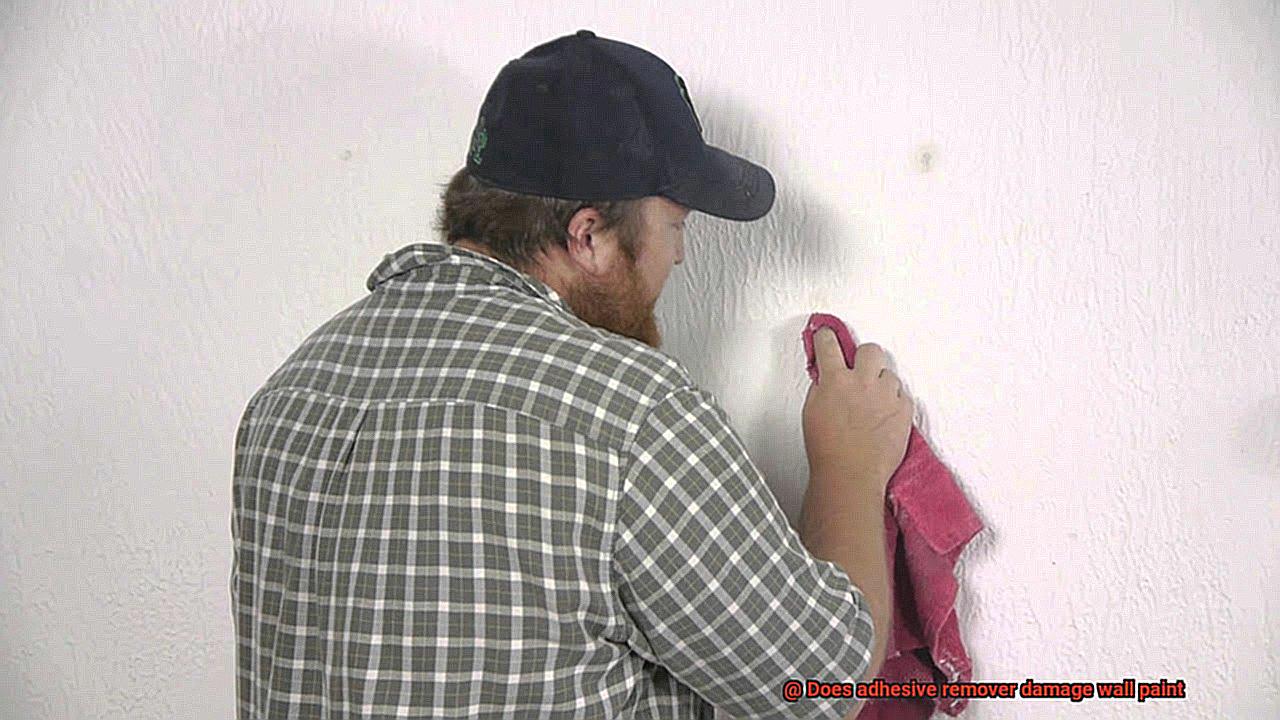
Read and Follow Instructions:
Before embarking on your adhesive removal journey, take a moment to familiarize yourself with the instructions provided by the manufacturer. These valuable insights will guide you in choosing the right application technique, dwell time, and agitation methods for optimal results.
Test, Test, Test:
Just as you would conduct a trial run for a new recipe or experiment with a bold fashion choice, it is crucial to conduct a small test before diving headfirst into adhesive removal. Apply a small amount of adhesive remover on an inconspicuous area of your wall to ensure compatibility and avoid potential paint disasters.
Gear Up for Success:
Equip yourself with superhero gloves to protect your hands from any potential irritants present in the adhesive remover. Additionally, ensure proper ventilation in the room to whisk away any unpleasant fumes that may arise during the process.
Embrace Gentle Rubbing:
When applying the adhesive remover, channel your inner spa masseuse and use gentle circular motions with a clean cloth or sponge. Avoid aggressive scrubbing akin to a Friday night cleaning frenzy – remember, we’re aiming for tender loving care here.
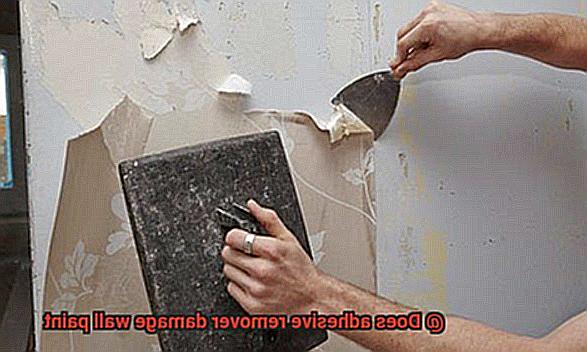
Patience is Key:
Allow the adhesive remover some quality alone time with the residue. Patience is indeed a virtue. Let it work its magic and dissolve the adhesive before attempting to remove it completely.
Delicate Scraping Techniques:
If necessary, employ a plastic scraper or putty knife with a rounded edge to gently scrape off any softened residue. Treat this step as a graceful dance – no rough moves, please. We want to avoid any inadvertent paint casualties.
Rinse and Repeat:
Once you have successfully removed the adhesive residue, meticulously wipe the area clean with a damp cloth or sponge to eliminate any remaining traces of the adhesive remover. Consider it the final rinse after a luxurious hair treatment – a residue-free shine is what we’re aiming for.
Inspect and Restore:
After cleaning, carefully inspect the wall paint for any signs of damage such as discoloration or peeling. Should you identify any issues, consider repainting or seeking professional assistance to restore your wall’s pristine appearance.
Possible Paint Damage Despite Precautions
Imagine the excitement of moving into your dream home, only to discover unsightly adhesive residue on the walls. Determined to tackle this eyesore, you gather supplies and proceed with caution. However, even with precautions, paint damage can still occur. In this article, we explore possible paint damage when using adhesive removers despite precautions, providing tips to minimize risks.
The Aggressive Nature of Adhesive Removers:
Adhesive removers often contain strong chemicals that can dissolve or soften paint if left on for too long. To avoid this, always follow manufacturer instructions.
Type and Quality of Paint:
The type and quality of paint on your walls can contribute to potential damage. Lower-quality or uncured paints may be more susceptible to chemical solvents.
Conduct a Test:
Before applying adhesive remover widely, conduct a small test in an inconspicuous spot. This helps identify adverse reactions or paint damage.
Application Techniques:
To minimize risks, apply a small amount of adhesive remover onto a clean cloth or sponge instead of directly spraying the wall. Work in small sections and avoid leaving the remover on for long periods.
Promptly Wipe Off:
After allowing the adhesive remover to work, promptly wipe off residue with a damp cloth or sponge. Leaving it on increases the likelihood of paint damage.
Touch-Up Paint:
Despite precautions, slight discoloration or dullness may remain. In such cases, touch-up paint can restore the wall’s appearance.
0yUQD_QY11Y” >
Conclusion
In conclusion, it is important to note that adhesive remover can potentially damage wall paint.
While some adhesive removers are specifically formulated to be safe on painted surfaces, others may contain harsh chemicals that can strip or discolor the paint. It is always recommended to test the adhesive remover in a small, inconspicuous area before applying it to the entire wall.
If you are unsure about the compatibility of the adhesive remover with your wall paint, it is best to consult a professional or seek advice from the manufacturer.

